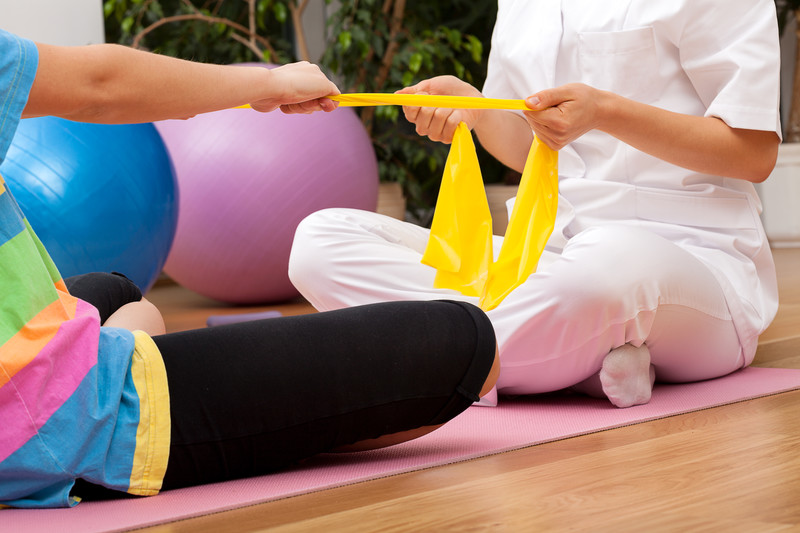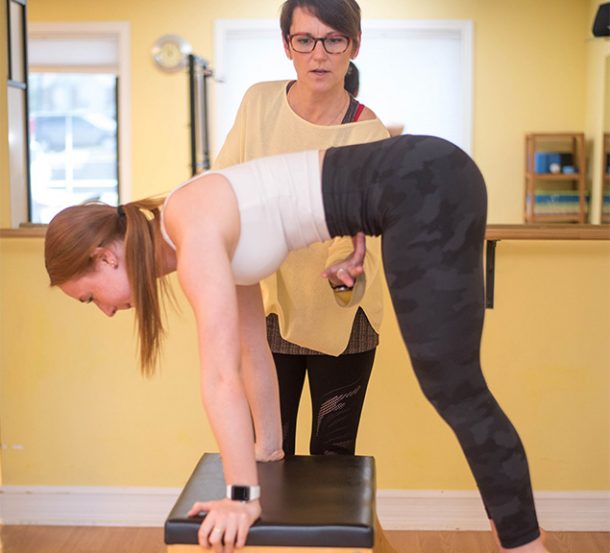The Complications of Immobility: Learn How Pilates Can Help
December 4, 2019
Immobility, even for a short period of time (or only in a certain limb), can have serious effects on the whole body. Your muscles, bones, and even heart will weaken unless you take steps to keep them healthy. In fact, it is much easier to prevent the complications of immobility than to treat them after the fact. Pilates can help with both scenarios.
Causes of Immobility
You may need to counter-act the effects of immobility if you are limited to your bed or a wheelchair. Other causes of immobility include:
- Bed rest due to illness
- Paralysis of any limb
- Restriction of a limb in a brace or cast
- Restriction of joints with a brace or cast
- Loss of sensation in any body part
Effects of Immobility
Overtime, the effects of immobility can become worse than the illness or injury that caused the immobility in the first place.
- Muscles Loss
The first complication is muscle weakness. Research has found that immobile muscles will lose up to 15 percent of their strength each week. This means that after five weeks of immobility your muscles will have lost almost or more than half of their strength.
The first muscles to be affected are the core muscles, because they no longer have to resist gravity. These muscles support you throughout essentially every kind of movement. Unless you prevent core muscle loss, you will find that climbing stairs, walking, and even sitting up is a challenge.
Pilates focuses on these vulnerable muscles first and foremost. Not only can you maintain their condition with Pilates, you may even improve their strength, leaving bed rest stronger than when you started. Many of the key Pilates exercises that develop the core muscles can be done while lying down, so you can exercise no matter what kind of immobility you are dealing with.
Pilates exercises can also focus on the muscle groups that you can move, to ensure they maintain as much of their strength as possible.
- Bone Density Loss
Like muscles, bones need activity to remain strong. During immobility, bones will lose their density rapidly, until 12 weeks at which point bone density levels out. However, this rapid immediate loss may cause osteoporosis, or give you a much greater risk of developing it later on. It is much harder to regain bone density than to maintain it in the first place.
Pilates exercises will allow you to use your own body weight to put pressure on your bones, encouraging them to remain healthy. Those exercises which develop muscle strength will also maintain your bone density, especially in critical areas like your hips, knees and back.
- Other Complications
There are other rarer complications of immobility that you can prevent. For example, after three weeks of bed rest you could develop orthostatic hypotension, where your circulatory system no longer adjusts as you sit up, making your heart rate and blood pressure increase. Leg exercises and pressure wraps can treat this condition over time, but Pilates leg exercises and sitting exercises may help prevent it in the first place.
Similar treatments are given to patients who develop venous thromboembolisms from inactivity. This condition is a blood clot that forms in the veins of the leg. Simple leg exercises and other Pilates exercises can also help prevent these clots from forming.
If you have immobility, even for a short period of time, you can take charge of your health and prevent these conditions from developing. Contact us at Absolute Pilates to sign up for a Pilates class. You may even end up stronger than you were before your immobility!
